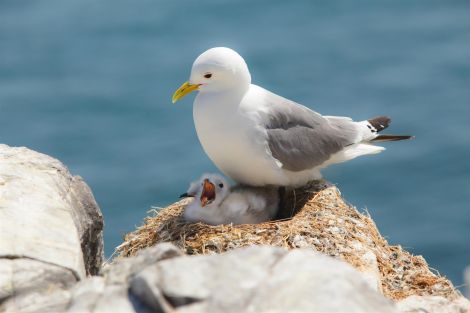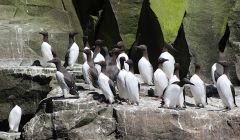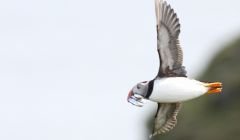Climate / Everyone can help slow the decline of kittiwakes
SMALL changes by everyone can help combat a widespread decline in numbers of seabirds like kittiwakes, according to Will Miles, the seabird monitor for environmental group SOTEAG.
Miles, who took over the role from Martin Heubeck last year, said that the kittiwake, described in books as a “gentle looking” gull, has plummeted in numbers over the past 10 to 15 years.
Shetland colonies that once numbered into the thousands are in same cases down to less than 100.
New colonies have also sprung up, but in nowhere near the same numbers. Birds are also nesting in more inaccessible, sheltered and often overhanging, cliff faces.
“There are still quite a few birds but in smaller colonies and we tend to find them in areas where they are particularly sheltered,” said Miles.
“It is really hard to know [why they are doing this], it could be predation, but there may be other advantages to that habitat.”
He said that while the far-ranging kittiwakes’ decline seemed to reflect environmental change over a wide area, such as a reduction of feed fish, folk can help by cutting their personal greenhouse gas emissions.
Miles said: “People can reduce their carbon footprint and that’s something we think will help those birds quite a lot. In small scale, little ways it can all add up.”
Bird experts are eagerly awaiting the result of a nationwide Seabird Count, the last of which was undertaken in 2000. Precise figures should follow the compilation of collected data, a “mammoth” task that should be concluded next year.
Miles said: “This covers the whole UK, it is a huge project. Shetland is a really big part of it because Shetland is such an important site for sea birds.”
According to Miles, there is no question that the figures so far suggest a major decline in kittiwakes.
Become a member of Shetland News
The birds, which were once very common around the banks of Shetland, rely heavily on small fatty feed fish of the herring variety. Sadly, the abundance of sprats and the like does not exactly coincide with the kittiwake’s breeding season.
Nesting patterns may reflect predatory pressure. Gulls, skuas and mammals are all known to prey on the kittiwake and its young.
Become a member of Shetland News
Shetland News is asking its many readers to consider paying for membership to get additional features and services: -
- Remove non-local ads;
- Bookmark posts to read later;
- Exclusive curated weekly newsletter;
- Hide membership messages;
- Comments open for discussion.
If you appreciate what we do and feel strongly about impartial local journalism, then please become a member of Shetland News by either making a single payment, or setting up a monthly, quarterly or yearly subscription.

































































